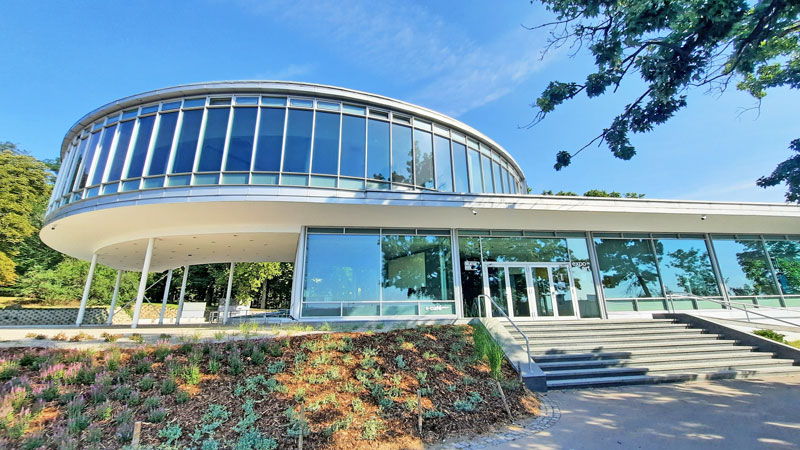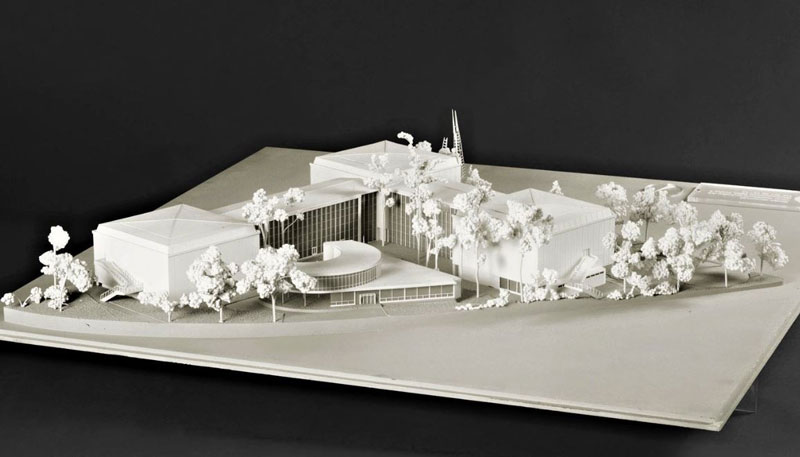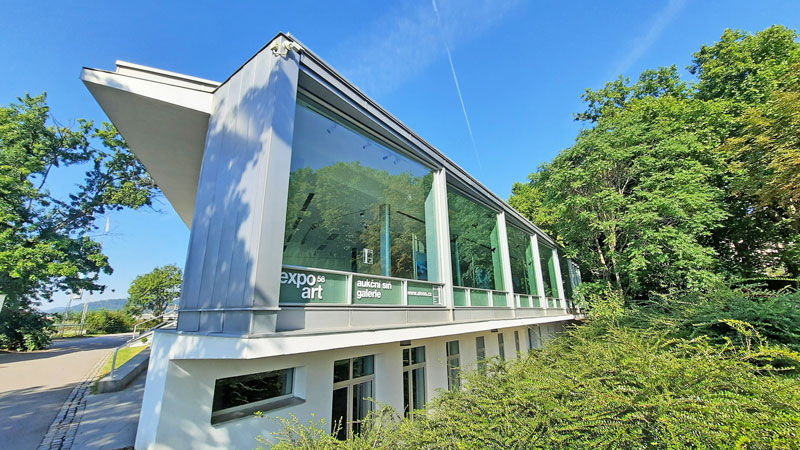Prague Expo 58
If you are thinking that Expo 58 was in Prague then unfortunately that would be wrong but we do have a little piece of Czech design that was built for Expo 58 in Brussels so if architecture and design interest you it might be worth a trip to the Adolf Loos Apartment and Gallery and it’s associated Expo 58 ART exhibition hall. Combine this with a trip to Letna Park, the beer garden and/or the Technical Museum.

The Historical Reason
By 1955 the communists have been in power in Czechoslovakia for 7 years since the 1948 Communist Coup. They wanted to show off what it was like for the average Czech to be living in this time so they decided to enter the Expo 58 which was to be held in Brussels. So the idea was to fool foreigners into thinking this building was representative of regular Czech life.
The Design
The winning trio of architects František Cubr, Josef Hrubý and Zdenek Pokorný all worked for something called the “State Project Institute for the Construction of Towns and Villages in Prague”. The Czechoslovak Pavilion (No.38) was designed to have 3 main cubic exhibition areas linked by vertical sheets of glass and an external restaurant/bar. It went on to win the top prize at Expo 58 (the Golden Star) as well as more than a dozen other awards which was outstanding considering more than 30 countries entered and there were a total of 73 pavilions. It’s about the restaurant/bar that I will now concentrate this post.
The Restaurant

At Expo 58 the restaurant building hosted both an international open-air cafe/restaurant on the ground floor and a Czech restaurant on the first floor. Like the larger pavilion, the restaurant made great use of vertical glazing with a clearly “Frank Lloyd Wright inspired” steel and glass design incorporating the iconic tubular steel supports, cantilevered balconies and open-space rooms. In the picture above you see a model of the Czechoslovak Pavilion with the restaurant/bar which was actually at the back of the building in the garden area.
Moving to Prague
As an example of how Czechs were living their day to day lives it failed miserably but as a piece of art/architecture it’s as fresh now as it was 70 years ago. In 1958 it was a success by all accounts and in fact one of the awards it won was for it’s ability to be dismantled and moved. So that’s what they did i.e. the exhibition buildings and restaurant/bar were all dismantled and the following year it was relocated to Prague. The main pavilion was rebuilt at the Exhibition Grounds but was destroyed by a fire in October 1991. The restaurant was moved to it’s current location right at the end of Letna Park (not exactly a conspicuous place for this kind of building). It was not maintained by the city and fell into disrepair in the early 90s with its windows largely smashed it became a place for homeless people to stay.

Between 2001 and 2020 it was an office for an advertising agency but a second renovation that finished in 2021 brought the building back up to it’s original standard. The only major addition to what you see now is the sub-terranean office area which was not part of the original Expo 58 design. It has now become the setting for the Adolf Loos Apartment and Gallery and the Expo 58 ART exhibition hall. Check the Gallery Website for details of what’s on or just get there after 10am and use the cafe.
What’s Not Here
As well as the restaurant building there were two other external exhibits in front of the Czechoslovak pavilion at Expo 58 in Brussels. One was called Kaplan’s Turbine (a Czech-designed water turbine that generated electricity and is widely used today) and the other was a sculpture called “Atomic Age”. Immediately in front of the Expo 58 building in Prague there is something that looks like a scenic point. In reality this was the location of “Kaplan’s Turbine” before it was removed. The Atomic Age sculpture was moved directly to the front of the Brno Exhibition Centre and renamed to the “New Age Sculpture”.
Something Related or a Few Minutes Away
Food and Drink – Hanavsky Pavilon
Activity – Architecture Walking Tour
Art/Culture – National Gallery (modern)
